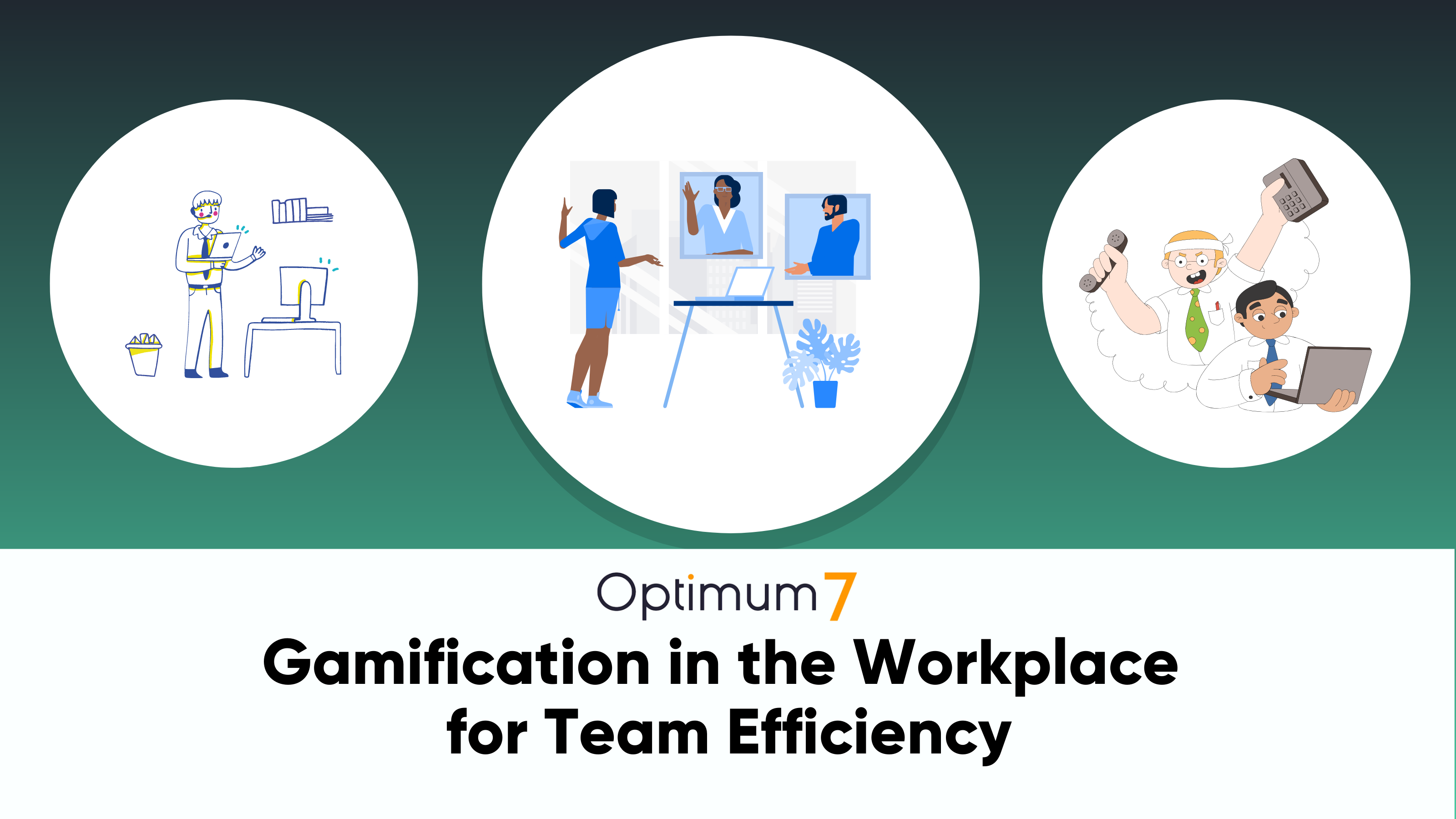In an era where remote work and digital collaboration are the norms, driving efficiency and synergy within teams has never been more crucial. Yet, traditional management techniques often fall short in fully engaging team members, especially in environments that demand creativity, agility, and a strong sense of ownership. This is where gamification steps in, not just as a trend but as a game-changer for modern workplaces.
Gamification can significantly boost employee engagement by incorporating motivational strategies that make work more enjoyable and rewarding. But how can gamification truly transform your team’s dynamics, and more importantly, how can you implement it in a way that yields measurable results?
Demystifying Gamification: Beyond the Buzzword
At its core, corporate gamification involves integrating game-like elements—such as points, badges, leaderboards, and challenges—into non-game settings. In the workplace, this means applying these elements to tasks, goals, and everyday interactions to create a more engaging and motivating environment. But it’s not just about making work “fun”; it’s about leveraging the psychology of motivation to enhance performance, drive collaboration, and achieve organizational goals.
Gamification transforms everyday tasks into activities that are both engaging and productive. It shifts the mindset of employees from merely completing tasks to actively participating in a process that rewards effort, creativity, and collaboration. By turning routine activities into challenges, employees are not just working—they’re playing, competing, and striving to improve continuously.
However, the key to successful gamification is customization. Gamification isn’t a one-size-fits-all solution. It needs to be tailored to your team’s specific needs, culture, and goals to truly unlock its potential. Understanding your team’s dynamics, what drives them, and what types of recognition they value are crucial steps in designing an effective gamification strategy.
Why Gamification Works: The Psychological Underpinnings and Employee Engagement Strategies
Gamification taps into several psychological principles that drive human behavior:
- Achievement: People are naturally driven to achieve goals and be recognized for their accomplishments. Gamification provides a clear framework for setting and achieving goals, offering immediate feedback and recognition, which in turn fuels further motivation. For instance, employees might be motivated by the prospect of earning a badge or climbing a leaderboard, which satisfies their need for achievement and status.
- Autonomy: Gamification empowers employees by giving them control over their progress. When team members feel they have the autonomy to achieve their objectives in their own way, they’re more likely to be engaged and proactive. This sense of ownership not only boosts morale but also encourages innovation, as employees are more willing to experiment with new ideas when they feel in control.
- Social Connectedness: Humans are inherently social creatures. Gamification often includes social elements such as leaderboards and team challenges, which foster a sense of community and healthy competition. By participating in these social aspects of gamification, employees develop stronger bonds with their colleagues, which can lead to better teamwork and communication.
- Mastery: As team members navigate through challenges and levels, they develop skills and gain mastery, which boosts their confidence and encourages continuous improvement. This progression from novice to expert keeps employees engaged over the long term, as they see tangible evidence of their growth and contributions to the team’s success.
These principles aren’t just theoretical; they’re backed by extensive research. A study by McKinsey & Company found that organizations leveraging gamification reported a 60% increase in employee engagement levels. Furthermore, when employees are more engaged, they’re 87% less likely to leave the organization, according to Gallup. This means that gamification not only improves performance but also contributes to higher employee retention, saving companies the significant costs associated with turnover.
Transforming Collaboration Through Gamification to Enhance Remote Team Collaboration
The true power of gamification lies in its ability to transform the way teams collaborate and enhance employee morale. Here’s how it works:
- Creating a Shared Purpose: Gamification aligns individual goals with team objectives by creating a shared sense of purpose. When team members understand how their personal achievements contribute to the team’s success, they’re more likely to collaborate and support each other. For instance, if the gamification strategy includes a collective goal that the entire team must reach together—such as completing a project by a certain deadline—everyone is motivated to pull their weight and assist their colleagues in achieving this common objective.
- Breaking Down Silos: Gamified systems often require cross-functional collaboration. For example, a company-wide challenge to improve customer satisfaction might require input from sales, marketing, and product teams. This breaks down silos and encourages open communication across departments. By doing so, gamification fosters a culture of transparency and collaboration where information flows freely, leading to more innovative solutions and a more cohesive team environment.
- Encouraging Peer Recognition: Peer-to-peer recognition is a powerful motivator. Gamification platforms often include features that allow team members to recognize each other’s contributions, fostering a positive and collaborative work environment. This recognition doesn’t just come from management; it’s embedded in the daily interactions between peers, which can be more meaningful and immediate. For example, a simple “kudos” system where employees can award points or badges to their peers for a job well done can significantly enhance team morale.
- Real-Time Collaboration Metrics: Gamification provides real-time data on collaboration. For example, tracking how often team members engage in collaborative tasks or how quickly they respond to team challenges can provide valuable insights into team dynamics and areas for improvement. This data allows managers to identify patterns, such as which teams are collaborating effectively and which may need additional support or resources.
By integrating these elements into the daily workflow, gamification helps create a work environment where collaboration isn’t just encouraged—it’s ingrained in the company culture.
Real-World Applications of Gamification: Workplace Gamification Examples
Let’s explore some real-world examples of gamification where it has led to significant improvements in team efficiency and collaboration:
- SAP’s Roadwarrior Game: SAP introduced a gamified approach to sales training with its Roadwarrior game, where sales reps earned points for completing training modules and demonstrating knowledge in real-life scenarios. This approach led to a 30% increase in training completion rates and a noticeable improvement in sales performance across teams. The competitive nature of the game encouraged sales reps to not only complete their training but to excel, leading to better-prepared employees and higher overall sales numbers.
- PwC’s Multipoly: PwC used a gamified simulation called Multipoly to engage new hires in learning about the company’s operations. The game turned a typically dry onboarding process into an interactive and competitive experience. The result was a 78% increase in onboarding satisfaction and faster integration of new hires into the team. By transforming onboarding into a game, PwC made it easier for new employees to absorb crucial information and feel connected to the company from day one.
- Microsoft’s Language Quality Game: Microsoft developed a gamified tool to improve the quality of its language translation processes. Employees played a game where they reviewed language translations and scored points based on accuracy. This gamification effort improved translation quality by 15% and reduced review time by 25%. By making the review process more engaging, Microsoft was able to improve the quality of its translations significantly while also making the task more enjoyable for employees.
These examples illustrate how gamification can be tailored to address specific business challenges, from enhancing training and onboarding to improving process efficiency and product quality. Whether the goal is to improve sales, streamline onboarding, or enhance quality control, gamification provides a versatile and effective solution.
Practical Steps to Implement Gamification in Your Team
Ready to start implementing gamification into your team? Here’s a step-by-step approach to get started:
- Identify Key Objectives: Start by identifying the specific behaviors and outcomes you want to influence. Are you looking to improve collaboration, increase productivity, or enhance learning and development? Defining clear objectives will guide the design of your gamification strategy. For instance, if your goal is to boost collaboration, your gamification system might include team-based challenges that require cross-departmental input.
- Design Meaningful Challenges: Create challenges that are aligned with your team’s goals. Ensure that these challenges are achievable yet motivating, and offer rewards that are meaningful to your team members. It’s important that the challenges reflect the real work environment—tasks that are relevant to the employees’ roles and that contribute to the company’s overall objectives. For example, if your team is in sales, you might create a challenge that rewards points for each client meeting or contract signed, with a leaderboard to track progress.
- Choose the Right Platform: There are various gamification platforms available, from simple tools that integrate with existing project management software to more comprehensive systems. Choose a platform that fits your needs and can scale as your team grows. Look for platforms that allow for customization so you can tailor the gamification elements to your specific objectives and company culture.
- Launch and Monitor: Introduce gamification gradually, and monitor its impact on team performance and engagement. Gather feedback from your team to refine and improve the system. It’s crucial to keep the lines of communication open during this phase. Regular check-ins can help you gauge how well the gamification is being received and whether any adjustments are needed. If you notice that participation is lower than expected, consider whether the challenges or rewards need tweaking to better resonate with your team.
- Iterate and Evolve: Gamification isn’t a set-it-and-forget-it solution. Regularly review the effectiveness of your gamification efforts and make adjustments as needed. As your team’s dynamics evolve, so should your gamification strategy. For instance, if your team becomes more proficient in their roles, you might introduce more complex challenges to keep them engaged. Continuous improvement is key—what works today might need to be updated tomorrow to keep your team motivated.
Beyond the Basics: Advanced Gamification Techniques
For teams ready to take gamification to the next level and fully realize the gamification benefits, consider these advanced techniques:
- Personalization: Tailor gamification elements to individual team members’ preferences and motivations. For example, some may be motivated by competition, while others may prefer collaborative or learning-focused challenges.
- Data-Driven Insights: Use analytics to track the effectiveness of gamification in real-time. Analyze which elements are driving the most engagement and which areas need improvement.
- Integrating Gamification with Other Initiatives: Combine gamification with other engagement initiatives, such as recognition programs or wellness challenges, to create a holistic approach to employee motivation and well-being.
- Narrative and Storytelling: Incorporate storytelling elements into your gamification strategy to make it more engaging. Creating a narrative that your team can follow, such as a quest or mission, can add depth to the gamification experience and make it more memorable.
- Long-Term Progression Systems: Introduce progression systems that allow employees to build on their achievements over time. This could include unlocking new levels, gaining special status, or earning long-term rewards. Such systems encourage sustained engagement and continuous improvement.
Making Gamification a Core Part of Your Culture
Gamification can transform your team’s efficiency and collaboration, but its success depends on how well it’s integrated into your company culture and corporate training. It’s not just a tool; it’s a mindset that encourages continuous improvement, fosters a positive work environment, and aligns individual contributions with organizational goals.
As you embark on your gamification journey, remember that the most effective gamification strategies are those that are authentic to your organization’s values and resonate with your team members. By focusing on creating meaningful experiences, providing real-time feedback, and fostering a culture of recognition and growth, you’ll unlock the full potential of your team.
Ultimately, the goal is to create a work environment where employees are motivated, engaged, and committed to the collective success of the team. By incorporating gamification thoughtfully and strategically, you can foster a culture of collaboration and efficiency that not only drives performance but also makes work more rewarding and enjoyable for everyone involved.






